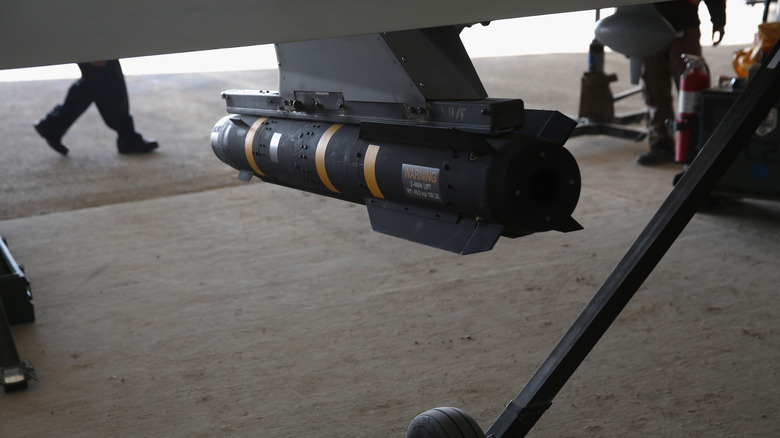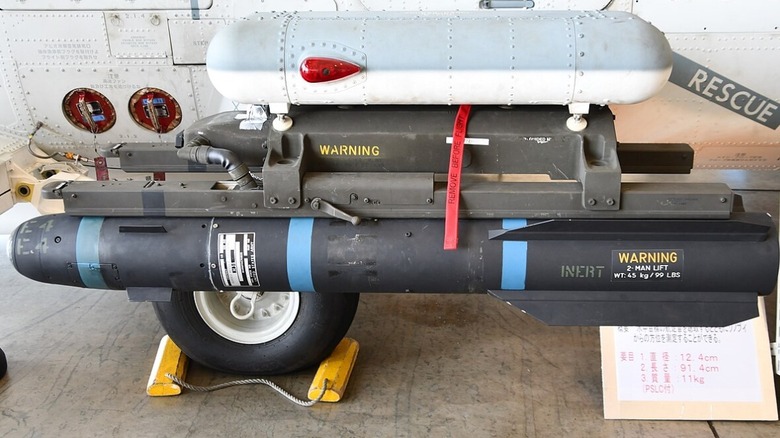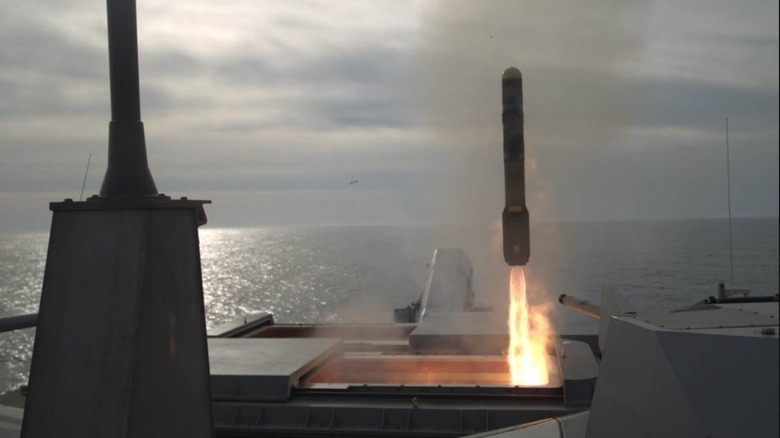How Much Does A Hellfire Missile Cost?
"Buy cheap, buy twice," as the old saying goes. Though canny shoppers know that there are bargains to be had without compromising on quality, it's no secret that the military, in particular, boasts some very impressive and formidable tech at some eye-watering prices. In March 2024, then-president Biden's Department of Defense budget request was $849.8 billion. With a stunning sum like that in mind, it really makes you wonder about the costs of some of the military's best-known and deadliest weapons.
Take the Hellfire missile, one of the most potent weapons ever devised in the arena of armor-piercing and bunker-busting. There's isn't a tank in the world that can survive the force of a hit from the Hellfire missile, a rocket-propelled powerhouse that is 5.33 feet long and weighs around 107 lbs. It's versatile enough to be used on platforms from the marines' AH-1W Super Cobra to the monstrous Reaper drone, but unsurprisingly, all of this doesn't come cheap.
Of course, it's all but impossible to place an exact unit cost on Hellfire missiles, because the U.S. Army doesn't tend to shout such information from the rooftops. Nonetheless, The Defense Post, having "reviewed all Hellfire II missile sales to foreign countries since 2010 that were publicly available," places the price of a single Hellfire II "between $130,000 and $160,000." This kind of purchase, however, isn't just like picking up a pint of milk from the supermarket, and there are a lot more considerations that go into the final cost.
Other factors that go into the purchase of a Hellfire missile
The devastatingly effective Hellfire missile and its variants, manufactured by Lockheed Martin, command a lot of attention from international buyers. Allies that use the Hellfire include Norway, which wields them in tripods on the shore, and Australia, whose Eurocopter Tiger, a model that one of the best attack helicopters ever used in war, was the first non-domestic vehicle to be equipped with the Hellfire II. The inherent issue with selling armaments to other nations, though, is that it's not just about providing the weapons themselves, but also the means to use them, in the various forms those means will take.
For instance, a Lebanese purchase of 1,000 Hellfire II missiles in 2015 came to a cool $146 million. This huge outlay, though, according to The Defense Post, "also comes with repair and return, spare and repair parts, support equipment, documentation, personnel training and equipment, logistics and technical support services." It's rather like buying a used car in that sense: everything's got to be official and above board, with the paperwork and all the essentials included. In February 2025, similarly, a huge sale of Hellfire missiles to Israel, totaling $600 million, was announced. The price of the 3,000 missiles in question includes, per Defense Industry Europe, "testing equipment, software support, spare parts, and engineering assistance, ensuring full operational integration within the Israeli Air Force." In training exercises, such as the Apache helicopter firing drills between NATO forces of Finland, Britain, and Sweden in May 2025, allies are able to pool their resources, share expertise, and become stronger units together.
The different variants of the Hellfire missile and factors that contribute to its cost
Another complicating factor in putting a dollar figure on a Hellfire missile is that the family has expanded significantly since its introduction. The first version of the Hellfire, which made its combat debut during Operation Just Cause in December 1989, has been joined not only by the Hellfire II, but also by variants like the Hellfire Longbow. The size of the family and the passage of time has meant the price of the missiles has been further variable.
In 2020, The War Zone released figures stating that orders from the 2021 Fiscal Year resulted in average prices of $45,409 for a Hellfire for the U.S. Marine Corps and Navy, a stark difference from the $213,143 for an Army-used missile. In the middle was a model for the Air Force, which stood at $70,000. The Army and Air Force numbers are complicated by the potential for access to Overseas Contingency Operations purchases, a lower $76,461 and $31,000 per missile respectively.
Whichever way you look at it, the Hellfire missile is a costly prospect, but an extremely valuable one. Its sophisticated systems, including laser targeting, make it very accurate, while also contributing to its price. It would not be suited, then, to mass attacks such as drone swarms – one tactic that makes drones so difficult for the U.S. military to deal with – or similar. However, in crucial, targeted attacks, it's a force to be reckoned with.


